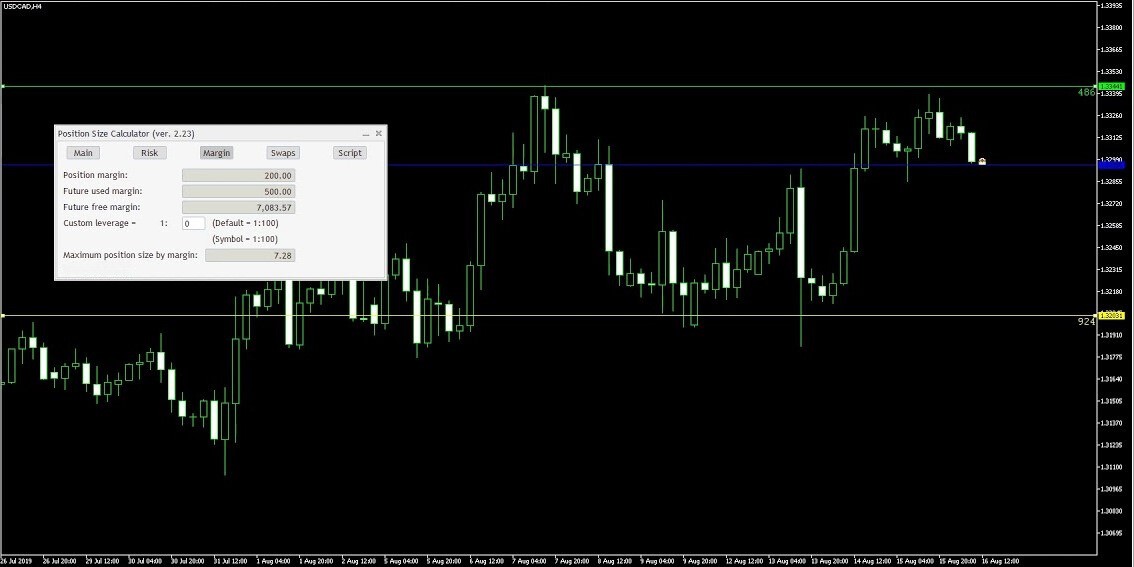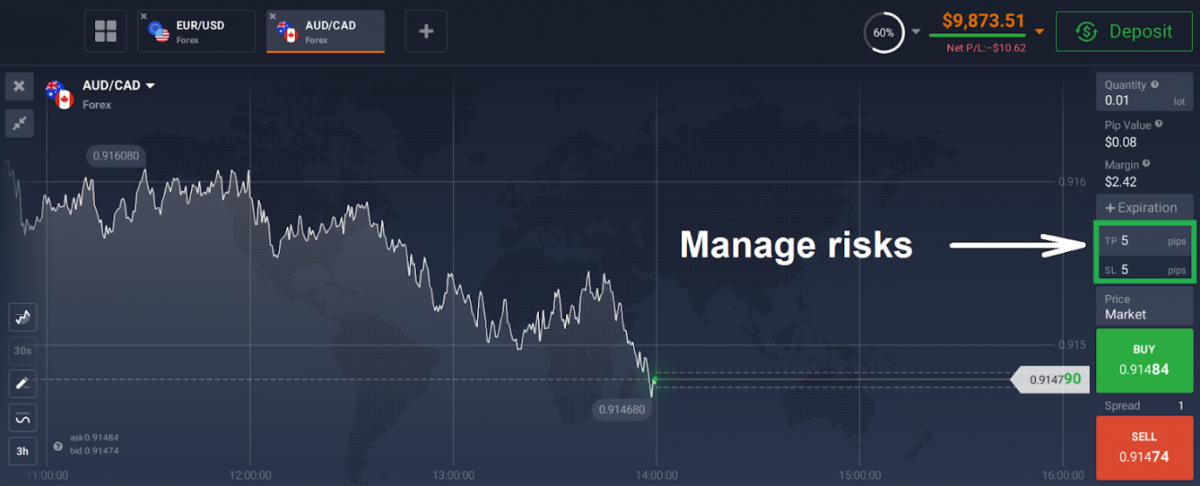Difference between initial margin and maintenance margin
Margin, in the context of the forex market, is a fundamental concept that traders must grasp to navigate the complexities of currency trading successfully. Margin, simply put, is the collateral required by brokers to facilitate leveraged trading. It allows traders to control positions larger than their account balance, potentially amplifying profits but also increasing exposure to losses. To harness the power of margin effectively, it is crucial to comprehend the distinctions between initial margin and maintenance margin.
Initial margin is the initial deposit or collateral a trader must provide to open a leveraged position. It serves as a protective buffer for brokers, ensuring that traders have the financial capacity to cover potential losses. In contrast, maintenance margin is the minimum account balance required to keep a position open. Failing to maintain this balance may lead to margin calls and position liquidation.
In the dynamic world of forex, where market conditions can change rapidly, knowing the difference between initial and maintenance margin can be a lifesaver. It empowers traders to make informed choices and manage their accounts prudently.
Initial margin explained
Initial margin, an essential concept in forex trading, is the upfront collateral that traders must deposit with their brokers when opening a leveraged position. This margin serves as a security deposit, safeguarding both the trader and the broker from potential losses resulting from adverse market movements.
To calculate initial margin, brokers typically express it as a percentage of the total position size. For example, if a broker requires an initial margin of 2%, and a trader wishes to open a position worth $100,000, they would need to deposit $2,000 as the initial margin. This percentage-based approach ensures that traders have sufficient funds to cover potential losses, as the forex market can be highly volatile.
Brokers impose initial margin requirements to mitigate the risks associated with leveraged trading. It acts as a financial safety net, ensuring that traders have adequate capital to cover potential losses that may occur during the life of the trade. By mandating initial margin, brokers reduce the risk of default and protect themselves from losses incurred by traders who may not have the financial capacity to manage their positions effectively.
Furthermore, initial margin plays a vital role in risk management for traders. It encourages responsible trading by preventing traders from overleveraging their accounts, which could lead to substantial losses. By requiring an upfront deposit, initial margin ensures that traders have a vested interest in managing their positions prudently.
Consider a trader who wishes to buy 100,000 euros (EUR/USD) at an exchange rate of 1.1000. The total position size is $110,000. If the broker's initial margin requirement is 2%, the trader would need to deposit $2,200 as the initial margin. This amount acts as collateral, providing a safety net for both the trader and the broker in case the trade goes against them.
Maintenance margin unveiled
Maintenance margin is a critical component of forex trading that traders must comprehend to ensure the responsible management of leveraged positions. Unlike initial margin, which is the initial collateral required to open a position, maintenance margin is an ongoing requirement. It represents the minimum account balance a trader must maintain to keep an open position active.
The significance of maintenance margin lies in its role as a safeguard against excessive losses. While initial margin protects against potential initial losses, maintenance margin is designed to prevent traders from falling into a negative balance as a result of unfavourable market movements. It acts as a safety net, ensuring that traders have enough funds in their account to cover potential losses that may occur after a position is opened.
Maintenance margin plays a pivotal role in preventing margin calls. When a trader's account balance falls below the required maintenance margin level, brokers typically issue a margin call. This is a demand for the trader to deposit additional funds into their account to bring it back to or above the maintenance margin level. Failure to meet the margin call may result in the broker closing the trader's position to limit further potential losses.
Furthermore, maintenance margin serves as a risk management tool, helping traders manage their positions responsibly. It discourages traders from overleveraging their accounts and encourages them to monitor their positions regularly to ensure they have sufficient funds to meet the maintenance margin requirement.
Suppose a trader opens a leveraged position with a total position size of $50,000, and the broker's maintenance margin requirement is 1%. In this case, the trader would need to maintain a minimum account balance of $500 to prevent a margin call. If the account balance falls below $500 due to adverse market movements, the broker may issue a margin call, requiring the trader to deposit additional funds to bring the balance back up to the required level. This ensures that traders are actively managing their positions and are financially prepared for market fluctuations.

Key differences
The criteria for initial margin requirement involve the circumstances that prompt the need for traders to allocate an upfront collateral when opening a leveraged position. Brokers impose initial margin requirements to ensure that traders have the financial capacity to support their positions. These criteria may vary slightly among brokers but generally include factors such as the size of the position, the currency pair being traded, and the broker's risk assessment policies. It's essential for traders to understand that different brokers may have varying initial margin requirements for the same currency pair or trading instrument.
Maintenance margin criteria come into play once a trader has an open position. It dictates the minimum account balance required to keep the position active. Maintenance margin is typically set at a lower percentage than the initial margin requirement. This lower percentage reflects the ongoing nature of maintenance margin. As market conditions fluctuate, maintaining an open position becomes less capital-intensive, but traders must still have a certain level of funds available to cover potential losses. The criteria for maintenance margin ensure that traders actively monitor their positions and have sufficient funds to prevent their positions from being closed due to adverse market movements.
Failing to meet initial and maintenance margin requirements can have significant consequences for traders. If a trader's account balance falls below the initial margin requirement, they may not be able to open new positions or may face limitations on their trading activities. Furthermore, if the account balance drops below the maintenance margin level, brokers typically issue margin calls. These margin calls require traders to deposit additional funds promptly to meet the margin requirements. Failure to do so may result in the broker closing the trader's positions to limit further losses. Such forced liquidations can lead to substantial financial losses and disrupt a trader's overall trading strategy.

Practical application
Margin call process
When a trader's account balance approaches the maintenance margin level, it triggers a critical phase in forex trading known as the margin call process. This process is designed to protect both traders and brokers from excessive losses.
As a trader's account balance nears the maintenance margin level, brokers typically issue a margin call notification. This notification serves as an alert, urging the trader to take action. To resolve the margin call, traders have a few options:
Deposit additional funds: The most straightforward way to meet a margin call is to deposit additional funds into the trading account. This injection of capital ensures that the account balance returns to or surpasses the maintenance margin level.
Close positions: Alternatively, traders can choose to close some or all of their open positions to free up funds and meet the margin requirements. This option allows traders to retain control over their account balance.
If a trader fails to respond to the margin call promptly, brokers may take unilateral action by liquidating positions to prevent further losses. This forced liquidation ensures that the account remains solvent but may result in realized losses for the trader.
Risk management strategies
To avoid margin calls and manage risk effectively, traders should implement the following risk management strategies:
Proper position sizing: Traders should calculate position sizes based on their account balance and risk tolerance. Avoiding excessively large positions reduces the likelihood of margin calls.
Use stop-loss orders: Setting stop-loss orders is paramount. These orders automatically close positions when predefined price levels are reached, limiting potential losses and helping traders stick to their risk management plan.
Diversification: Spreading investments across different currency pairs can help mitigate risk. This diversification strategy can prevent a substantial loss in a single trade from affecting the entire account.
Continuous monitoring: Regularly monitoring open positions and market conditions allows traders to make timely adjustments and respond to potential margin call warnings promptly.
Conclusion
To summarize the key points:
Initial Margin is the initial deposit or collateral required by brokers to open a leveraged position. It acts as a protective buffer against potential initial losses, encouraging responsible trading practices and safeguarding both traders and brokers.
Maintenance Margin is the ongoing requirement to maintain a minimum account balance to keep an open position active. It serves as a safety net, preventing traders from falling into negative balances due to adverse market movements and plays a pivotal role in preventing margin calls.
Understanding the difference between these two types of margin is of paramount importance for forex traders. It enables traders to manage their accounts responsibly, reduce the risk of margin-related issues, and make informed decisions in the ever-changing forex market.


